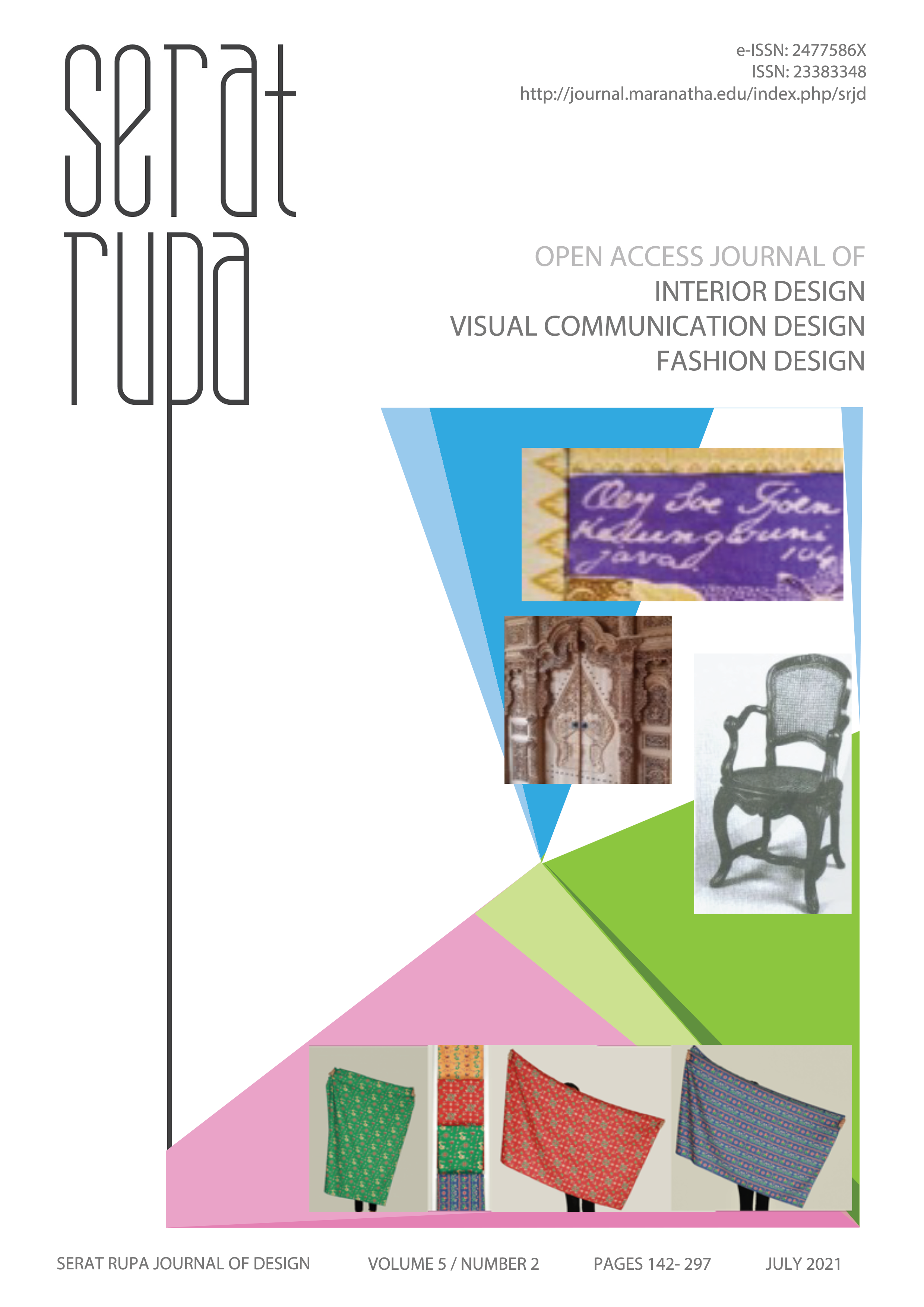JEPARA WOOD CARVING AND THE CULTURAL INFLUENCES OF THE NUSANTARA MARITIME SPICE ROUTE
Main Article Content
Abstract
Downloads
Article Details
References
Bagus, Fivin., et al. (2019). Bentuk Rupa dan Makna Simbolik Motif Ukir Pada Masjid Mantingan Jepara Dalam Konteks Sosial Budaya. Jurnal Imajinasi Vol. XIII. No. 2. (Juli 2019).
Carey, Peter. (2008). Orang Cina, Bandar Tol, Candu dan Perang Jawa: Perubahan Persepsi tentang Cina 1755-1825. Jakarta: Komunitas Bambu
Fajarwati, A. A. S., et all. (2020). Intersection cultural value, nationalism, and commodification behind the Garuda chair as Jepara’s signature industries. Humaniora, 11(1), p 29-34.
Gustami, S. (2000). Seni Kerajinan Furniture Ukir Jepara, Kajian Estetik Melalui Pendekatan Multidisiplin. Yogyakarta, DIY, Yogyakarta: Penerbit Kanasius.
Hidayat, Z. M. (1993). Masyarakat dan Kebudayaan Cina di Indonesia. Bandung: Tarsito
Iswati. (2016). Kajian Estetik dan Makna Simbolik Ornamen di Komplek Makam Sunan Desa Sendangduwur Paciran Lamongan. Arty Vol. 5 No. 1. (Januari 2016).
Koentjaraningrat. (1992). Kebudayaan, Mentalitas dan Pembangunan. Jakarta: Gramedia Pustaka Utama
Koestoro, L. R. (1996). Prasejarah Sarana Transportasi Air Nusantara. Kongres Prasejarah Indonesia I. Yogyakarta: Assosiasi Prehistori Indonesia.
Kurniawan, Bambang K. (2008). Pengaruh Dominasi Gaya Eropa Pada Mebel Ukir Jepara. Dimensi Vol. 6. No. 1. (September 2008).
Marizar, Eddy., et al. (2020). Development of wood carving furniture technology in Jepara. IOP Conference Series: Materials Science and Engineering. 852. 012146. 10.1088/1757-899X/852/1/012146.
Merrill, Francis E. (1965). Society and culture: an introduction to sociology. New Jersey: Prentice Hall: p 129
Monique Van de Geijn, et al. (2002). Domestic Interiors at the Cape and Batavia 1602-1795. Den Haag; Waanders Publishers, Zwolle.
Muhajirin. (2018). Aesthethic Expressions of Jepara Carving in Efforts to Deal with The Market Demands. CORAK Jurnal Seni Kriya Vol. 8 No.1. (Mei-Oktober 2018).
Poelinggomang, E. L. (2001). Perdagangan Maritim Indonesia Jaringan dan Komoditinya. Diskusi Ilmiah Arkeologi XII. Makassar: Ikatan Ahli Arkeologi Indoenesia.
Pribadi, Yanwar. (2005). Era Niaga di Nusantara Pada Masa Kerajaan +1500-1700 M. Al Qalam Vol. 22 No. 1. p 65-84 . ISSN 2620-598X
Pratiwia, A.P., et al. (2018). Analisa Perkembangan Motif Ukiran Di Jepara Pada Abad Ke-16 Hingga Abad Ke-17. Jakarta: Interior Design Departmen. School of Design. Bina Nusantara University.
Reid, Anthony. (1992). Asia Tenggara dalam Kurun Niaga 1450-1680 Jilid I: Tanah di bawah Angin. Jakarta; Yayasan Obor. p 43.
Sumarno, Carolline., et al. (2018). Gaya Desain Baroque dan Rococo pada Lemari Schepenkast di Museum Sejarah Jakarta. Jakarta: Fakultas Seni Rupa dan Desain. Universitas Tarumanegara
Supriyono, A. (2013). Tinjauan Historis Jepara Sebagai Kerajaan Maritim dan Kota Pelabuhan. Paramita Vol 23, No. 1 (Januari 2013): p 27-39.
Syafiera, Aisyah. (2016). Perdagangan di Nusantara Abad ke 16. Avatara Vol. 4, No.3 (Oktober 2016): p 721-735.
Tjandrasasmita, Uka. (1987). Banten sebagai Pusat Kekuasaan dan Niaga Antar Bangsa, Kumpulan Makalah Diskusi, Banten Kota Pelabuhan Jalan Sutra. Jakarta: Depdikbud, RI.
Wibisono, Sonny Chr. (2004). A Brief History of Research on Trading Ports/Harbour Sites. Country Report Indonesia dalam Workshop on the Archaeology of Early Harbours and Evidence for Inter-Regional Trade. Singapore: ARI-NUS

